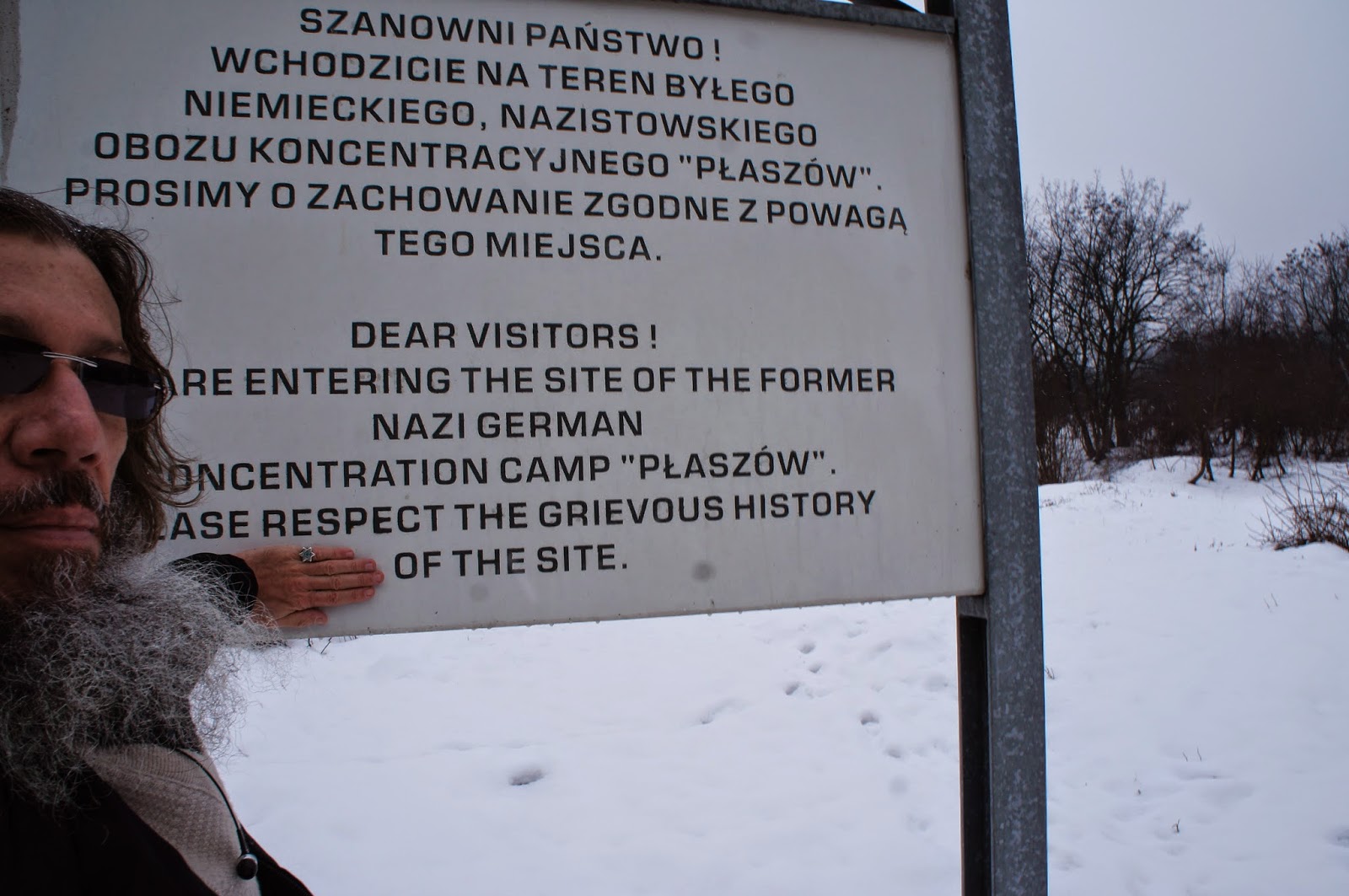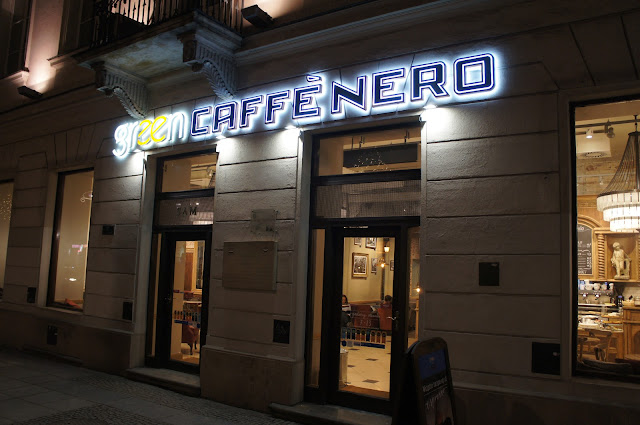JACOB JR, MY JEWISH WORLD - KONZENTRATIONSLAGER PLASZOW. KRAKOW/POLAND
Sunday, Iyar 7, 5775. April 26, 2015.
Shalom! World.
Starting in October 1942, Jews were deported from the Krakow guetto to the Konzentrationslager Plaszow in the southern outskirts of town. Six months later, the guetto was liquidated and all of its residents were sent to the now-notorious camp. Over the course of the next two years, thousands would die from disease, starvation and mass executions. In early 1945, the remainning prisioners comenced a death march to KZ Auschwitz, where they would be killed on arrival. The nazis destroyed the camp as they retread, so there was nothing left for the Soviet troops to liberate when they arrived on 20 January 1945.

Not much remains from this Konzentrationslager, where thousand of prisioners died, from hard labour, hunger, disease and execution. Built on the site of a Jewish cemetery, it operated as a labor camp in 1942 and was converted to a KZ in January 1944. Nowadays, the vast site consists of a rolling hills and unkempt fields, a strangely peaceful setting that belies the tragedy that took place here.
 Spread over a large area behind Amon Göth's villa is the Liban Quarry, where thousands were worked to their deaths. Signs advise visitors to step with reverence, across the hilly, overgrown patch of land to the fenced-in site, rundown machinery still visible.
Spread over a large area behind Amon Göth's villa is the Liban Quarry, where thousands were worked to their deaths. Signs advise visitors to step with reverence, across the hilly, overgrown patch of land to the fenced-in site, rundown machinery still visible.
If you follow the path from Heltmana 40c, along from Göth villa, you come to a cross on a plinth and, beyond it, two more plaques.
At the corner of ul. Jerosolimska and ul. Abrahama we can feel that we are inside the former camp, and a sign across the road tell us as much. On this corner at ul. Jerozolimska 3 stands the infamous "Grey House", used as a prison and torture chamber by the SS during the camp's existence.
 |
| Grave of Sarah Schneer. Founder of the Bais Ya'acov girls schools. The Bais Ya'acov schools were the first schools for Ultra Orthodox girls. |

Across the path to the left we may be able to see the camp's limestone deposits and even find the entrances to three anti-aircraft shelters carved into the rock by prisioners.

 From the intersection where the Grey House stands, we now cross ul. Abrahama and continue up ul. Heltmana. This residential street was known as 'SS-strasse' during the war for it was here that the nazi officers lived, including camp commmandant Amon Goeth at number 22, known as the 'Red House'. You can see the back of the house by making a detour onto ul. Lecha, and if you follow it to the end and make a left onto the dirt trail there it will lead us to Hujowa Górka. One of the camp's mass execution sites, it was here that the nazis later exhumed the bodies of 10.000 Jews and burned them to hide their crimes.
From the intersection where the Grey House stands, we now cross ul. Abrahama and continue up ul. Heltmana. This residential street was known as 'SS-strasse' during the war for it was here that the nazi officers lived, including camp commmandant Amon Goeth at number 22, known as the 'Red House'. You can see the back of the house by making a detour onto ul. Lecha, and if you follow it to the end and make a left onto the dirt trail there it will lead us to Hujowa Górka. One of the camp's mass execution sites, it was here that the nazis later exhumed the bodies of 10.000 Jews and burned them to hide their crimes. To reach the camp, take any train bound for Podgórze and get off at Dworcowa. Otherwise, you can walk south from Krakus Mound: cut between the cemetery and the quarry and follow the path into the camp grounds.
To reach the camp, take any train bound for Podgórze and get off at Dworcowa. Otherwise, you can walk south from Krakus Mound: cut between the cemetery and the quarry and follow the path into the camp grounds.
Shalom! Aleichem.
Suporte cultural: SOUL avec L'Integration d'Association avec Israel et dans le Monde/Fr .









Comments
Post a Comment